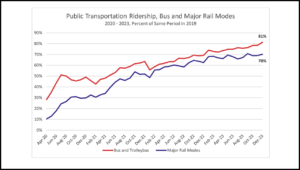CTA implements new rail operator scheduling rules
Written by Mischa Wanek-Libman, editorThe Chicago Transit Authority is changing its procedures concerning the scheduling of rail operators, the result of a comprehensive internal agency review of scheduling procedures following the March 24, 2014 incident at the O'Hare Blue Line station where an operator fell asleep at the controls and launched part of the train into an escalator.
The CTA said it has historically followed established scheduling principles and practices that are very similar to those of every other transit agency in the country, but is voluntarily and immediately conducting an internal analysis of those policies to determine if improvements could be made.
“Safety is our highest priority at the CTA,” said CTA President Forrest Claypool. “Any time an incident like this occurs, we take very seriously the responsibility of thoroughly reviewing all aspects of what happened — including longstanding policies and practices. In this instance, there were changes we could make that are appropriate and that further maximize safety for our customers and for our employees.”
Among the proposed changes:
- Setting a maximum of 12 hours of actual train-operations duty (including layover times at terminals and other non-driving rail duties) for rail operations employees in a 14-hour time period. Currently, there is no maximum.
- Increasing the minimum time of rest between shifts to 10 hours from eight hours.
- Require all rail operations employees to take at least one day off in any seven-day period. Currently, there is no limit.
- For new operators in the first year of operating a train, limit weekly hours operating a train to 32 hours. As they do now, these employees will work other rail-related duties besides operating trains in their other work hours. Currently, there is no limit.
CTA said these changes will make its scheduling guidelines as stringent, and in most cases more stringent, than its peer transit agencies nationwide.
Two other operational changes have occurred at the O’Hare Blue Line station following the March 24 incident and include reducing the speed limit of approaching trains to 15 mph from 25 mph, and moving “trip arms,” devices that will stop a train traveling above the speed limit, further back from the end of the platform. Additionally, the CTA will repeat its fatigue awareness training for all rail operators.





